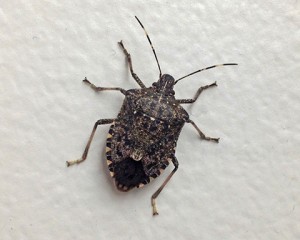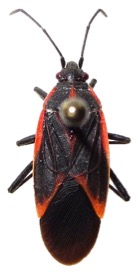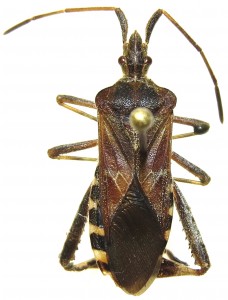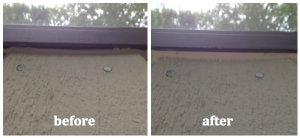Insects exhibit a variety of behaviors or adaptations that help them to survive the harsh conditions of winter. One that can be quite frustrating to homeowners belongs to the the group of insects we call “overwintering pests.” These organisms survive winter by taking refuge in South or West facing cracks and crevices, which maximizes exposure to the warm sun and buffers them from wind and freezing cold. While trees and rocky hillsides provide overwintering sites in nature, man-made structures that now dominate the landscape are perfectly acceptable to these insects.
The Culprits. Multicolored Asian ladybird beetles, boxelder bugs, western conifer seed bugs, cluster flies, and the brown marmorated stink bug are common fall invaders in the Northeast. Some of these insects are exotic invasive species that were accidentally introduced to the US, such as the stink bug, which was first identified from samples collected in Allentown, Pennsylvania in the 1990’s. A new insect, the kudzu bug, was introduced to Georgia in the early 2000’s and may soon invade homes in the Northeast.




Can they be Stopped? If overwintering pests gain access to buildings through cracks and crevices, it seems reasonable that sealing these openings will keep pests out. While no formal research has tested this hypothesis, a recent grant awarded by the Pest Management Foundation will evaluate the effectiveness of exclusion as a technique to keep stink bugs and other overwintering pests out of homes (Note: the Pest Management Foundation is the education, research and training arm of the National Pest Management Association). In the mean time, below are some common recommendations to dealing with overwintering pests:
- Using an appropriate sealant labeled for doors and windows, seal exterior gaps that could allow entry into the home. Remember to inspect locations where wires, pipes, and other utility lines enter the structure, especially on the South and West facing side of buildings.
- Make sure that screens are tight fitting in the window frame, and they do not have any tears.
- Keep attic doors and fold-down stairs closed during winter months. Insects can enter attic spaces through soffits, later entering the livable space when they are attracted to lights and heat.
- Flues should be closed in the fireplace when it is not in use.
Trapping Pests. On warm winter days, stink bugs and other overwintering pests may become active. During the day, they can be found at windows, while at night they may fly towards artificial lights from the television, computer or lamps. One indoor trap type that is easy to make and effective is a pan trap. Read more about this device here: Stink bugs beware! Homemade stink bug traps squash store-bought models, Virginia Tech researchers find.
Additional Resources:

